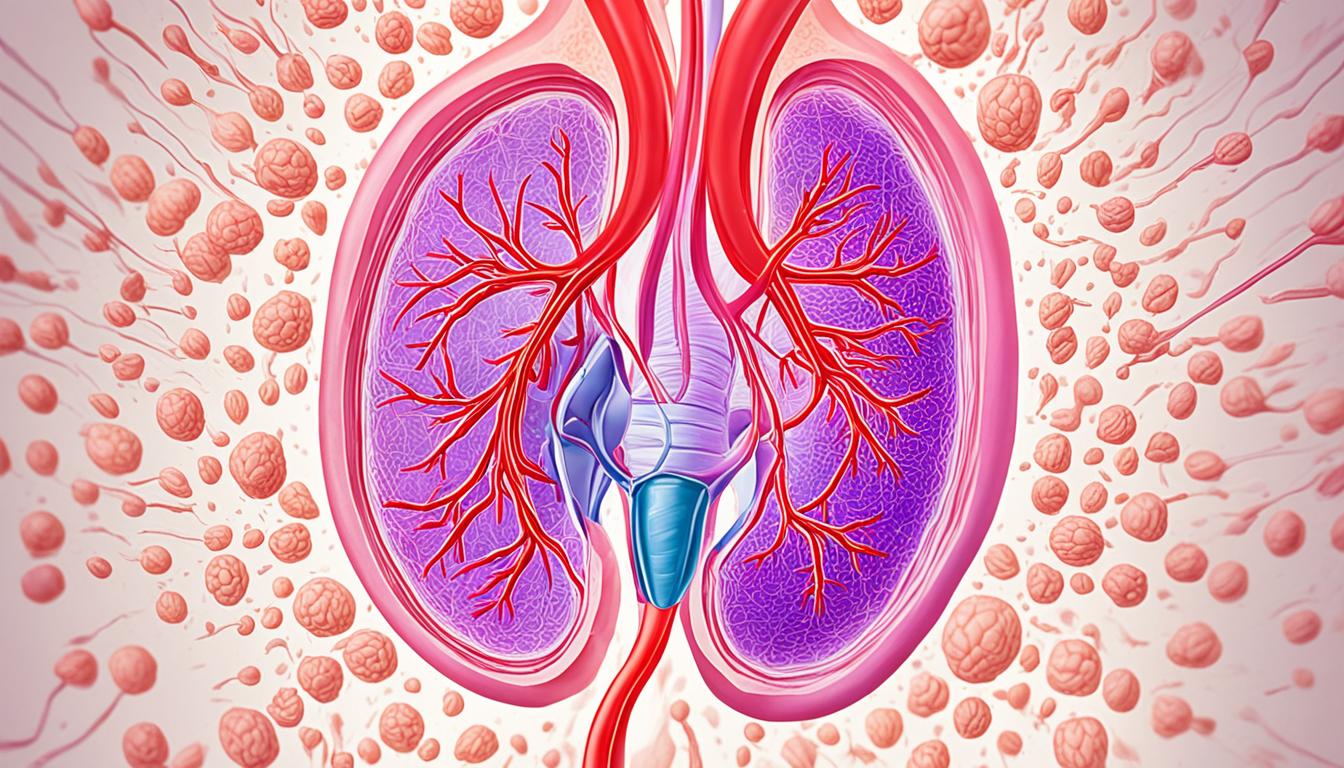Pyloric stenosis is a condition that blocks or slows food and gastric juice movement to the duodenum. It mostly affects babies, causing them to vomit their food forcefully. This happens because the passage from the stomach is too narrow.
Babies with pyloric stenosis may seem in pain, slow, too full, or have trouble digesting. These signs can upset both the baby and the parents. Doctors use symptoms like upper stomach pain, vomiting, and fullness to diagnose it. They might also do X-rays and endoscopy to be sure.
It’s key to tell pyloric stenosis apart from other issues for the right treatment. Doctors consider several conditions that might seem like it. These include cardiac spasm, duodenal stenosis, atrophic gastritis, and high intestinal blockage.
The treatment depends on what’s causing the pyloric stenosis. If it’s because the muscle is too thick, medicine can help. But, if it’s due to an organic reason, like a narrowed pylorus, surgery is needed. The surgery might be done through small cuts or with open surgery.
While current treatments work well, stem cell therapy shows promise as a new approach. Stem cells could help heal the damaged part and improve pyloric stenosis. Scientists are studying this treatment further to understand its full potential.
Key Takeaways:
- Pyloric stenosis is a condition that stops or slows food from passing to the duodenum, often seen in babies.
- It causes babies to vomit strongly after eating and might make them look like they’re in pain or too full.
- Diagnosing it involves noting specific symptoms, plus using X-rays and endoscopy to confirm.
- Medication is an option if it’s a muscle issue, but surgery is needed for more severe cases.
- Stem cell therapy could be a helpful new way to treat pyloric stenosis by promoting healing.
Causes and Risk Factors of Pyloric Stenosis
Pyloric stenosis is a condition marked by a blockage or narrowing at the exit of the stomach. This narrowing is linked to a larger-than-normal pylorus part of the stomach.
The exact cause of pyloric stenosis is still unknown. But, experts think it might involve problems with the stomach’s muscle size.
This ailment is usually not passed down in families. Yet, kids of parents who also had it might be more at risk. Boys get it more often than girls. And full-term babies are at a higher risk than premature ones.
An important risk factor is if the mom smoked while pregnant. Using certain medicines, like erythromycin during pregnancy or in babies, can also raise the risk.
Expecting moms should talk to their doctors about these risk factors. They can help with advice and understanding what might cause pyloric stenosis.
Understanding Pyloric Stenosis Causes
To grasp pyloric stenosis causes, we must first understand how the pyloric sphincter works. This is a muscle at the stomach’s end and the start of the small intestine. It lets food move into the intestines slowly.
But, in pyloric stenosis, the pylorus can get too big. This makes the path for food from the stomach to the intestine narrow. As a result, babies can’t keep food down and might not gain weight well.
The cause of pyloric stenosis is complex. It’s likely a mix of family history and how our environment affects us. For instance, if parents had this condition, their children might be more likely to get it too.
Things like smoking during pregnancy and certain medicines can increase the risk. Smoking when pregnant is harmful in many ways and is connected to pyloric stenosis. Taking erythromycin during pregnancy or giving it to newborns can also raise the pyloric stenosis risk.
It’s key for doctors to think about these risk factors. They should carefully weigh the risks and benefits of using certain medicines with pregnant women or infants.
In sum, pyloric stenosis is a problem that makes it hard for food to move from the stomach. The causes are not all understood but can involve the pylorus being too big, family history, and environmental issues. Smoking while pregnant and some medications can make pyloric stenosis more likely. We still have much to learn about preventing and treating it.
Surgical Treatment and Prognosis of Pyloric Stenosis
Surgical treatment is key for pyloric stenosis. The main surgery for it is pyloromyotomy. In this operation, doctors cut the pyloric muscle’s fibers to make the opening to the intestine larger. This helps food and gastric juices flow better. It allows proper digestion and reduces symptoms.
Before surgery, the baby might get fluids through a vein to fix dehydration and electrolyte levels. Doctors may use keyhole surgery or make a small cut in the baby’s belly for the operation. The surgery usually takes an hour with little blood loss, making it safe and quick.
After surgery, babies with pyloric stenosis recover quickly. They usually go home a day or two after the surgery. Their long-term outlook is great. Their symptoms go away, and they can eat normally. This surgery lets them live and grow healthily, free from the effects of pyloric stenosis.
Though surgery is the main treatment, stem cell therapy offers hope too. It helps heal tissues and might improve long-term results. With ongoing research, using stem cells in pyloric stenosis treatment could have more advantages. This could better the treatment results for these babies.

